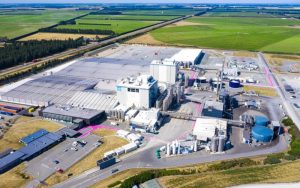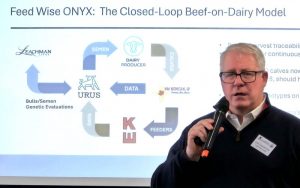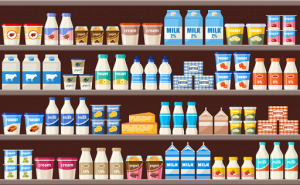
The result took pundits by surprise, given that market fundamentals around dwindling production both here and abroad have not altered – and look likely to stay that way in the medium-term.
Prices fell 0.9%, but overall prices are still averaging US$5039. Whole milk powder (WMP) fell the most at 2.1%, while butter prices also dropped by 1.8%. There were also lifts with skim milk powder (SMP) up 1.6%, while cheddar and anhydrous milk fat (AMF) prices also posted gains.
Given how far prices have come since January, the result probably should not cause too much alarm, a point ASB’s Commodities Weekly made.
“With WMP prices up nearly 23% in 2022 thus far (and up more than 50% on historical averages), a wee dip is all a bit much of a muchness, particularly given the lift in SMP prices (which have underperformed WMP) shows demand for powders is still strong,” ASB says.
“There still isn’t much sign that tight global supply conditions will ease with any alacrity.”
Rabobank’s Emma Higgins held a similar view in her Global Dairy Quarterly Q1 2022: How high for how long? report, released just before the auction.
Dwindling world milk production looks set to support buoyant global dairy commodity prices over the coming months.
Weather-related issues, high or rising production costs and lingering disruptions from covid-19 resulted in milk production growth faring worse than previously anticipated in the final quarter of 2021.
These challenges have impacted dairy farmers from all the key production regions around the world.
Production is now expected to fall by 0.7% year-on-year in the first half of 2022, she said.
The high prices are also failing to induce greater production, meaning the supply deficit is unlikely to go away in the near-term.
“Poor forage quality is negatively impacting milk yields in the EU and the US. In some cases, dairy producers are maximising profit, not production, as they consider escalating feed costs,” Higgins says.
“After growing by 4% in 2021, despite a host of supply chain challenges, we now anticipate global dairy exports will slow in 2022 as the supply shortfall significantly impacts the exportable surplus from key dairy exporting regions.”
On the back of the report, the bank increased its forecast for the 2021-22 dairy season to $9.70/kg MS.
Fonterra, meanwhile, reaffirmed its $9.30-$9.90kg MS milk price at its 2022 interim result, with chief executive Miles Hurrell saying it showed the cooperative was performing well.
“We have the highest forecast farm gate milk price, we’re paying a dividend and our earnings are being achieved at a time when input costs have been significantly higher,” Hurrell says.
“In the medium-term, we expect the supply-demand outlook to go some way to underpinning strong milk prices for next season.”
He says the co-operative was very comfortable with its guidance range this late into the milking season and saw no change to its forecast at this stage, when asked by a reporter if a $10 milk price was on the cards.
Looking ahead, he says pricing in its ingredients business was supportive of both milk price and earnings and he expected this to continue in the second half of the year.
“In the medium-term, we expect the supply and demand outlook to go some way towards underpinning a strong milk price next season,” he says.
Hurrell says there were several risks in the market that the co-operative was continuing to watch. These may be felt in the longer-term.
“The conflict in Ukraine has added to an already complex covid-19 operating environment, impacting global supply chains, oil prices and the global supply of grain,” he says.
“However, our lower debt levels mean we are in a stronger position to weather the heightened levels of uncertainty and market volatility the world faces right now.”
Fuelling that uncertainty is a surging covid outbreak in China as the country faces the biggest wave of cases since the 2020 Wuhan outbreak. Most of the new cases are in China’s north eastern Jilin province, while smaller outbreaks have hit major cities including Beijing, Shanghai and Shenzhen.
Westpac senior agri economist Nathan Penny says it would have likely weighed on prices.
But it’s also possible that the outbreak will cause more freight headaches than issues with demand, given the country’s big push to get its citizens to consume more dairy for health reasons and its government’s concerns over food security.
But neither milk price fall has altered any of the banks’ new season’s forecasts at $9.20/kg MS for ASB and $8.50/kg MS for Westpac, both of which are great starting points for farmers.

























